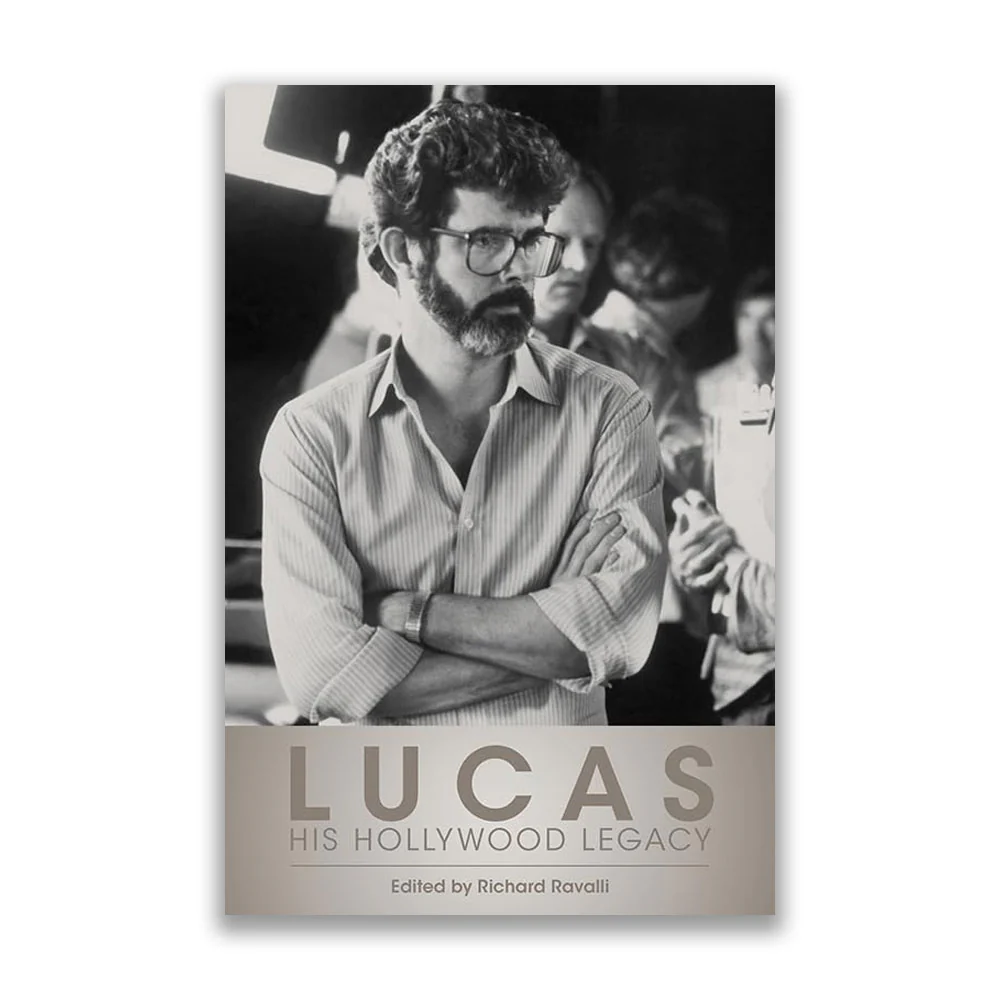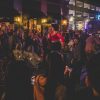Dr. Richard Ravalli
By Chris Murphy
Some of us just love our American Graffiti history and all of the spoils that came from it; things like Star Wars, Raiders of the Lost Ark, Pixar, ILM and so much more. Some people study it and check the history in its proper place in pop culture and our daily lives. Sayings like “use the force”, “you have a scooter and that’s almost like a motorcycle” or any of the classic Indiana Jones or Yoda quotes have become a stable part of our global lexicon. Dr. Richard Ravalli has been studying the George Lucas world for years and has just completed a book about the Modesto native. George Lucas cruised 10th and 11th streets, graduated from Downey high, attended MJC and conquered USC film school before revolutionizing the film industry.
Richard was born in Modesto, growing up on Tiffany Lane and later moved to east Modesto. He attended Sherwood Elementary, Somerset Junior High, and Fred C. Beyer High School. After graduating in 1992, he attended Modesto Junior College and CSU Stanislaus. He is currently Associate Professor of History at Jessup University in Rocklin.
Let’s meet Richard and dive into the world he has been researching.
ModestoView: What inspired you to take a deep dive into the life of George Lucas?
Richard Ravalli: When I started my PhD down at UC Merced, I was looking for a “valley heritage” subject that I could study there in their new humanities doctoral program. The idea of a Modesto museum dedicated to George Lucas inspired me, so I started reading the standard Lucas biographies, and then got driven to organize community events dedicated to this fascinating aspect of Modesto history, something that I felt not enough people were talking about. So, we held an informational local history symposium at MJC in 2006 (where I had been teaching part-time) and gathered together some great speakers, including Betty Saletta, the artist who created the “Graffiti statue” at Five Points in 1997. From there we did a Star Wars event at the MJC West campus in 2007, and then an American Graffiti celebration at the State Theater in 2008. While I didn’t end up writing my dissertation on local history, I continued reading about film history and the importance of Lucas. Over time, it became important to me to tackle this academic anthology because I felt that it needed to be done, and no one else was apparently doing it.
MV: Was there something in your childhood that connected with the stories of Mr. Lucas?
RR: I was definitely a big Star Wars fan growing up on Tiffany Lane! I’m not so much into it today, but it was a unique experience to be into these films and the toys like so many others around the world, while constantly being reminded that I lived in the hometown of the Star Wars creator. It just made things connect that much more deeply and made me proud of living in Modesto. Graffiti Night on McHenry in the 80s was also one of those things that made you think about Lucas and his legacy, even if I probably never saw the film before college. But I knew vaguely that all these people flooding into town had something to do with Modesto being “put on the map” by a 50s nostalgia film. Looking back, I regret that I never went to any later celebrations or commemorations of Lucas, like the 97 Lucas Plaza dedication. I think it was just all something I took for granted at the time; I was also still busy trying to figure out what I wanted to study (I initially worked in Modesto radio, at KO93 and Kat Country).
MV: This is a global phenomenon; how do you square this with his humble local origins?
RR: It’s still what makes the Lucas story so great, that he came from a small railroad/farming town in the Central Valley of California and became one of the wealthiest, most influential icons in modern America, and indeed around the globe. Thinking about that just makes me all the more interested in seeing Modesto continue to tap into this legacy. I definitely was all about promoting a Lucas museum for the city when I was organizing those events. We even had some concept art drawn up by local artist Mike Pascale. I realize that things took a different turn, with the Disney purchase of Lucasfilm and George’s forthcoming art museum in Los Angeles. But I still think it would be great for the city to have some kind of Lucas center, even if you still hear some negative grumblings in town about Lucas and his connection to the city. You would hear even worse things about John Steinbeck in Salinas, and today there’s this great Steinbeck Center there! So anything can happen.
MV: Do you think his influence is overstated? Not at all.
RR: When you consider all of the aspects of contemporary American cinema that he is connected to, not only as a filmmaker but as a Northern California entrepreneur, his influence is pretty profound. Not to be too blunt about it, but you don’t get compared to Walt Disney by being a flash in the pan!
MV: I always have marveled in the marketing genius of Walt Disney, yet George Lucas created something that has nearly consumed Disney. What is your take on this?
RR: Indeed, there’s a whole chapter on the Lucas-Disney connections in our anthology. And of course, those connections are on-going, as George is the largest individual shareholder in the corporation. So I don’t want to comment as a historian on history that hasn’t been “made” yet. But it is interesting to think about how big of a name Lucas was at his Hollywood height after the conclusion of the original Star Wars trilogy in 1983, and where Disney was at the time: still trying to catch up to the new industrial revolution that Lucas helped inaugurate. There are different ways that his relationship with Disney could have evolved back then and didn’t. The sale of Lucasfilm’s Pixar division to Steve Jobs in the mid-80s is one of those “what ifs” that makes historians wonder about the kind of influence George might have had in animation, and potentially at Disney, had he not sold that part of his company at the time. Would the “Disney Renaissance” after 1989 with The Little Mermaid still have taken place, or is it possible that Lucasfilm could have emerged as a bigger player in that field? You can always take the counterfactual too far in history, but it is at least fun to think about, and it can help us better gauge his overall importance in Hollywood.
MV: What do you think our culture, in particular Modesto, misses about all of this?
RR: Well, I’m glad to see the Graffiti Museum taking shape. It’s hopefully a sign that those who say that Lucas “hates Modesto” and that we shouldn’t have anything to do with taking this heritage seriously and being proud of it are voices of the past. But again, it would be cool to see the city go a step beyond a car museum. Again, I know he’s building a large art venue down south, but I think it would be wrong for Modestans to think that preserving and interpreting the larger Lucas story beyond Graffiti history and culture doesn’t make sense for us. I think it absolutely does. (Isn’t Tatooine a little like Modesto, after all?)
MV: George Lucas represents the Class of ’62 that has become a marker in time for our classic Americana, and it seems that the creativity of our 80 year old plus people are still driving our culture, i.e Paul McCartney, the Stones, are still moving cultural mountains. Do you agree?
RR: That’s a big claim, but those folks you mention are still around and still influencing culture, and again, Lucas has a big say in the direction of a major multinational corporation! So I think that makes some sense.
MV: Where do you go next after this project?
RR: I don’t get a lot of official institutional support for research with my current affiliation, so it’s mostly on my own dime and time. And I’m pretty much out of dimes! So while I enjoy the thrill of discovery that comes with historical research, unless there’s a major life shift for my family I’m probably moving away from that kind of investment.
MV: What was the most surprising thing you learned during your research?
RR: I’m still uncovering all kinds of cool biographic facts about George’s Modesto years, like the first mention of George Jr. in a Modesto Bee article on his dad. A student of mine helped me build a digital clippings file of hundreds of citations from the Bee, and that was just for everything up through 1979. I would like to have time to eventually go through that material, but again, serious research probably isn’t on the table for me anymore.
MV: You really helped us with the Modesto Historic Cruise Route project, what did we learn with all of this?
RR: Well, I only played a small part with helping write one of the plaques, but you can bet that I’m proud to have done that. I think all of the cruising projects that you’ve spearheaded have gone a long way toward documenting that history, but there is still plenty to learn.
MV: If you had a magic wand or light saber, what do you wish Modesto could do with this amazing Lucas connection?
RR: Well, again, my thoughts on that lean toward some type of cultural center or Lucas-themed museum. If there’s a Disney museum in San Francisco, then why can’t Modesto have something for George?
MV: What is your own personal favorite Lucas moment?
RR: Probably the kid’s newspaper that he created with his friend Mel Cellini in 1955, which the Bee reported on. I would die to see an original copy of one of those (the kid’s newspaper, not the Bee article, which I’ve actually seen an original copy of in the Bee archives).
MV: Beatles or Stones?
RR: Beatles, and if I had to be specific, Something.
To learn more or contact Richard, please email: rravalli@jessup.edu<mailto:rravalli@jessup.edu>
www.facebook.com/WJUHistory
To get a copy of he new book, Lucas, click- academymuseumstore.org/products/lucas-his-hollywood-legacy
Hopefully it will be at a local bookstore soon.
To donate to the Graffiti USA Museum, please click here: www.graffitiusamuseum.com<www.graffitiusamuseum.com>













